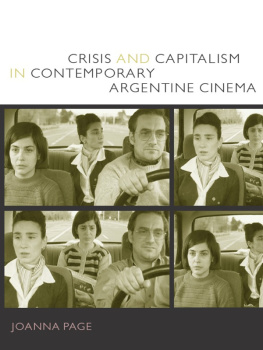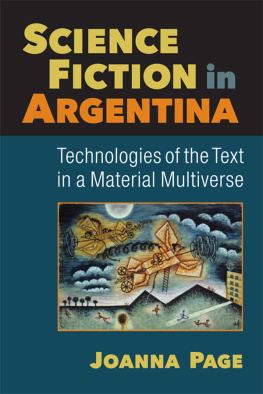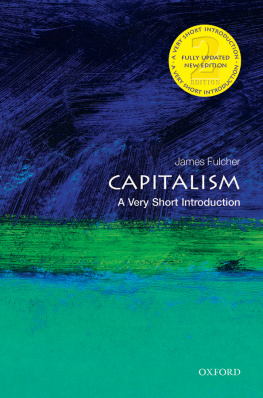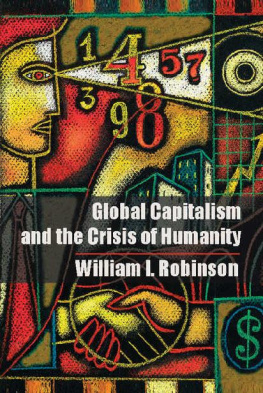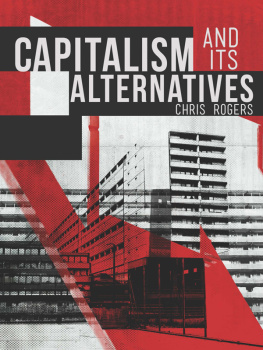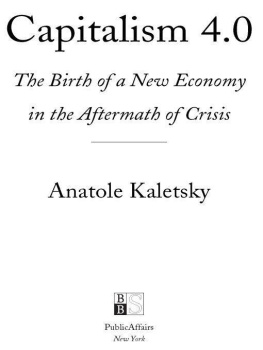Joanna Page - Crisis and Capitalism in Contemporary Argentine Cinema
Here you can read online Joanna Page - Crisis and Capitalism in Contemporary Argentine Cinema full text of the book (entire story) in english for free. Download pdf and epub, get meaning, cover and reviews about this ebook. year: 2011, publisher: Duke University Press, genre: Politics. Description of the work, (preface) as well as reviews are available. Best literature library LitArk.com created for fans of good reading and offers a wide selection of genres:
Romance novel
Science fiction
Adventure
Detective
Science
History
Home and family
Prose
Art
Politics
Computer
Non-fiction
Religion
Business
Children
Humor
Choose a favorite category and find really read worthwhile books. Enjoy immersion in the world of imagination, feel the emotions of the characters or learn something new for yourself, make an fascinating discovery.
- Book:Crisis and Capitalism in Contemporary Argentine Cinema
- Author:
- Publisher:Duke University Press
- Genre:
- Year:2011
- Rating:3 / 5
- Favourites:Add to favourites
- Your mark:
- 60
- 1
- 2
- 3
- 4
- 5
Crisis and Capitalism in Contemporary Argentine Cinema: summary, description and annotation
We offer to read an annotation, description, summary or preface (depends on what the author of the book "Crisis and Capitalism in Contemporary Argentine Cinema" wrote himself). If you haven't found the necessary information about the book — write in the comments, we will try to find it.
Joanna Page: author's other books
Who wrote Crisis and Capitalism in Contemporary Argentine Cinema? Find out the surname, the name of the author of the book and a list of all author's works by series.
Crisis and Capitalism in Contemporary Argentine Cinema — read online for free the complete book (whole text) full work
Below is the text of the book, divided by pages. System saving the place of the last page read, allows you to conveniently read the book "Crisis and Capitalism in Contemporary Argentine Cinema" online for free, without having to search again every time where you left off. Put a bookmark, and you can go to the page where you finished reading at any time.
Font size:
Interval:
Bookmark:

Duke University Press
Durham and London
2009
2009 Duke University Press
All rights reserved
Printed in the United States of America on acid-free paper
Designed by Amy Ruth Buchanan
Typeset in Scala by Keystone Typesetting, Inc.
Library of Congress Cataloging-in-Publication
Data appear on the last printed page of this book.
To my mother, who taught me to read
Money is the obverse of all the images that the cinema shows and sets in place, so that films about money are already, if implicitly, films within the film or about the film.
GILLES DELEUZE,Cinema 2: The TimeImage, 75
In writing this book I have received advice from many people and financial support from several institutions. Research trips to Argentina were made possible by grants from the University of Cambridge, the Centre of Latin American Studies, and Robinson College. In Buenos Aires a number of people assisted my research. I would particularly like to thank the helpful and generous library staff at the Instituto Nacional de Cine y Artes Audiovisuales; Daniel Sendrs and staff at the Museo del Cine Pablo C. Ducrs Hicken; Sylvia Valds and Marcelo Albnico from the Universidad de Palermo; the Press Office of the Buenos Aires Festival de Cine Independiente; Julia Choclin at Arte Video who helped me source a number of films; and several directors and producers who kindly gave me copies of their films which were not commercially available at that point, including Daniel Burak, Albertina Carri, Csar DAngiolillo, Gustavo Fontn, Aldo Paparella, Ral Perrone, Ana Poliak, and Lita Stantic.
Laura Podalsky and Michael Chanan made valuable comments on the manuscript, and I appreciate their time and perspicacity. I am very grateful to Geoffrey Kantaris for introducing me to Argentine film a number of years ago and for his support since then. I would also like to thank my postgraduate students at the Centre of Latin American Studies in Cambridge over the past few yearsincluding Philippa Page, Lauren Rea, Ed King, and Jordana Blejmarwho have shared my enthusiasm for Argentine literature and cinema and whose ideas have challenged and shaped my own. I owe a special debt of gratitude to friends and colleagues at Robinson College, Cambridge, without whom this book would have been written more quickly but much less happily. My final thanks goes to Geoff for his encouragement, patience, and unflagging cheerfulness.
Early versions of some of the material contained in this book have been published in journals and edited volumes, as follows. Parts of , were published in Viviana Rangil, ed., El cine argentino de hoy: entre el arte y la politica (Buenos Aires: Biblos, 2007) and in Mara Jos Moore and Paula Wolkowicz, eds., Cines al margen: Nuevos modos de representacin en el cine argentino contemporneo (Buenos Aires: Libraria, 2007), respectively. I am grateful to the publishers for their permission to reproduce this material.
Since the mid-1990s, Argentine filmmaking has experienced a boom in production that at the time of writing shows no signs of abating. Critics and film festivals worldwide have not been slow to herald a renaissance in Argentine cinema, and accolades, prizes and other sources of funding have secured access for a number of these films to screens around the world. That national production should show such a dramatic increasefrom fourteen feature films in 1994 to sixty-six in 2004is remarkable; that it should do so at a time of severe economic crisis is quite extraordinary.
In December 2001 Argentinas economic recession had reached the point at which the states policy of convertibility, under which the peso had been pegged to the dollar throughout the 1990s, became impossible to sustain. Financial investors withdrew, and there was a run on banks (el corralito), which reacted by freezing deposits, preventing individuals from accessing their savings. A measure of the depth of the Crisis is given by a comparison of GDP levels, which show a drop of almost 20 percent between 1998 and 2002, the sharpest fall experienced by any capitalist country of some significance at least since World War II and the gravest economic event ever in a country known for the recurrence of crises.
Devaluation also had a significant impact on the financial costs of filmmaking: because film stock and equipment are largely imported, and therefore payable in dollars, many of the costs associated with production virtually tripled overnight. Funds allocated to the Instituto Nacional de Cine y Artes Audiovisuales (INCAA), which had been relatively high between 1995 and 1998, were to suffer cuts of up to 50 percent as the crisis deepened.
This book does not set out to explain the boom in filmmaking that, having begun in the mid-1990s, only gathers pace during the Crisis and its aftermath: this task has already been undertaken by others. Critics coincide in referring to the Ley de Cine (Cinema Law), which came into force in 1995, as a crucial factor in the growth of Argentine cinema. The new law granted a degree of protection to the national film industry in terms of exhibition and provided significant funds for filmmaking, administered through the INCAA.
I see no reason not to concur with the majority of critics in their view that Argentinas boom in filmmaking also marks a radical shift from previous filmmaking aesthetics. The role played by film criticism itself in the creation of the phenomenon of New Argentine Cinema should not, however, be overlooked. The influential El amante enthusiastically proclaimed the advent of a new generation and a wholesale rupture with the old. The predisposition of critics toward the new has resulted in a number of self-fulfilled prophecies: for example, a number of critics went beyond supporting the new directors in written reviews, actively intervening to secure the inclusion of their films in festivals. That the films selected for this study date from the mid-1990s does, however, recognize clear shifts in aesthetics at this time; more importantly for my purposes, from this point onward films began to testify in earnest to the impact of growing unemployment, rising crime, and the expansion of the informal economy. The Crisis of 2001 was the culmination of a longer period of economic troubles and civil unrest, and for this reason I do not create artificial distinctions between pre-Crisis and post-Crisis films, most often reading them together as part of a corpus of texts charting the economic decline of the nation, and its social consequences, over several years.
My central purpose is to explore how cinema has registered, and indeed helped to construct, certain modes of subjectivity relating to Argentinas experience of capitalism, neoliberalism, and economic crisis. Thematic introductions precede the analyses of films presented in this book; to repeat this material here would be redundant, but some words about the range of texts selected, and approaches taken, may be of use. Significant space is dedicated to the films that have become widely associated with the label of New Argentine Cinema. Chapters , is their attention to shifts in subjectivity and representation provoked by specific political or economic structures and events. For reasons of space and focus, I have chosen to limit the scope of this book to fiction film, leaving aside the important contribution of documentary film in recent years. I have, however, included a number of films that operate on the border between fiction and documentary, and I return in my conclusion to suggest some important differences between the roles of fiction and documentary film (and video) in representing the Crisis.
Font size:
Interval:
Bookmark:
Similar books «Crisis and Capitalism in Contemporary Argentine Cinema»
Look at similar books to Crisis and Capitalism in Contemporary Argentine Cinema. We have selected literature similar in name and meaning in the hope of providing readers with more options to find new, interesting, not yet read works.
Discussion, reviews of the book Crisis and Capitalism in Contemporary Argentine Cinema and just readers' own opinions. Leave your comments, write what you think about the work, its meaning or the main characters. Specify what exactly you liked and what you didn't like, and why you think so.

